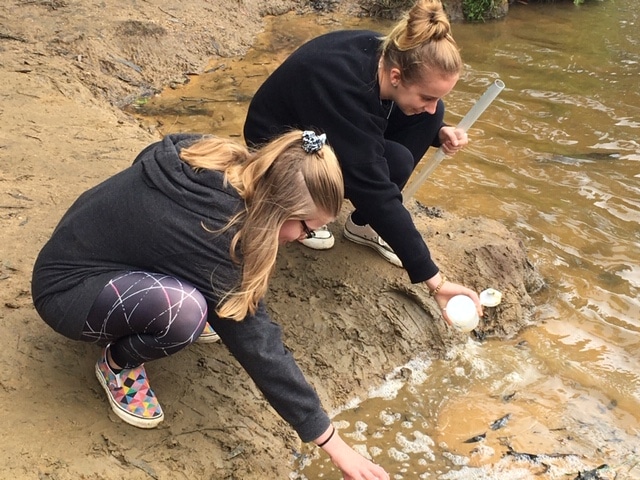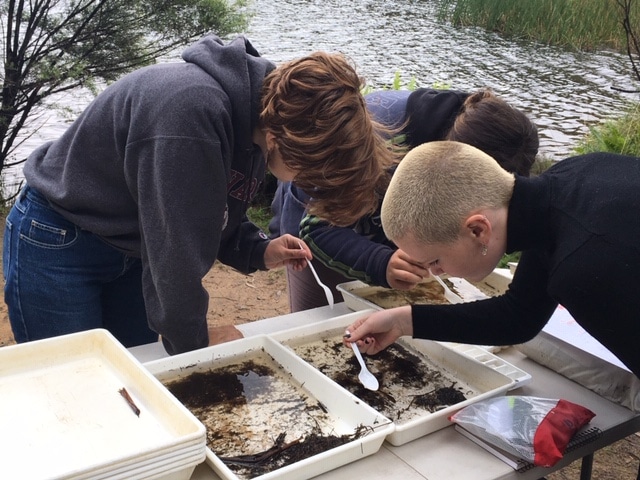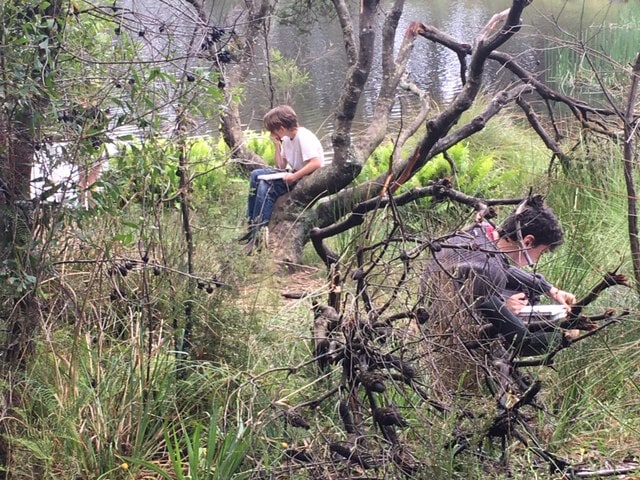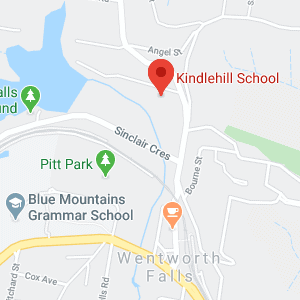For this project, we combined science and geography for an investigation into the biodiversity and function of the hanging swamp at Wentworth Falls lake, and to assess the impact of climate change on this environment.
Weekly sit and sketch, site studies to investigate our key inquiry questions with the assistance of local ecologists, and in class studies of swamps formed the basis of our investigation. Our findings together with the relationship we created with this local environment, have changed how we think about the humble hanging swamp.
We were keen to share our findings with others and so students undertook a range of projects. These included a podcast for local radio, a short film, a report to BMCC with recommendations for swamp management and mitigation against climate change; a wonder hub (students taking a younger class to the swamp for an experience that would enable them to link the beautiful local swimming place to the biodiversity and function of the swamp), and a range of artistic works that expressed the uniqueness and value of the hanging swamp as well as its role in addressing climate change.
Some highlights from our investigations: Realising that while we were quietly sketching and observing, swamp birds were observing us! Taking up a core sample of 12000-year-old peat! Finding dragonfly and caddisfly larvae. Coming to an understanding that the humble swamp acts as a community, sharing resources, sheltering, and protecting in service of the whole ecosystem. We also found out that healthy swamps can play an important role in mitigating climate change, as they absorb carbon from the atmosphere, are resilient to extreme weather events, and can even moderate extreme temperatures during fire events.
Later in the term, we did a fieldtrip to Ganguddy, also a swamp, and were able to once again appreciate the biodiversity and function of swamps to the whole ecology of the Greater Blue Mountains region. Swamps regulate the water for all the stream communities and waterfalls. Hopefully, the relationships we are making with these swamp environments will enable us to be part of the protection and conservation of the natural environments as a way of restoring some balance to our stressed planet and in proactively responding to the impacts of a changing climate.
Kindlehill School Says, Save the Swamps
Dear Councillors and Management,
Swamps can be described as the life blood of the Blue Mountains ecology but how do we know this? What made us care about swamps?
Over the past term at Kindlehill, high school students have been studying the hanging swamp at Wentworth Falls lake. Essentially we learnt how vital the hanging swamp is in protecting the lake environment and the biodiversity it holds.
The Wentworth Falls hanging swamp is biodiverse. While researching this, within a short time, students found 12 macroinvertebrate species at the lake’s edge. Some of these, such as the Caddisfly larva, can only thrive in high quality water. The swamp acts as a purification device for the water in the lake and ensures the water is clean. It also functions as a store of water, slowly releasing the water into the lake. One scientist told us that the swamp holds the same amount as water as is in the lake. We also discovered that the swamps generally play a key role in the filtering and regulating of water flows into streams within the Blue Mountains region.
The Hanging swamp like other swamps, can help mitigate the effects of climate change. Each swamp can be seen as an organism, formed over tens of thousands of years. This formation has led to swamps holding lots of carbon. They capture carbon and other greenhouse gases from the atmosphere and store it. If swamps dry out or are damaged, they can release this stored carbon back into the atmosphere and contribute to an increase in global warming.
Waterlogged swamps also help moderate extreme temperatures during events such as bush fires. Their water laden, soggy nature, means they can endure prolonged periods of drought. In heavy rainfall they capture the excess water, store it, and slowly release it as needed, preventing erosion and floods.
The swamp, although a resilient environment is not invincible. The swamp is prone to damage from climate change due to worsening extreme weather events. For example, more frequent bushfires, floods, storms, drought, and many more could destroy the swamp. Last year’s bush fires placed the swamp at risk.
This is why I share my concern here about plans for a walkway through the hanging swamp at Wentworth Falls Lake. I fear this might endanger its resilience and functioning. Given swamps can play a significant role in reducing the impact of climate change, I would like to see a swamp protection plan in place as part of the BMCC’s broader climate change strategy. I would also like to see support for residents to rehabilitate swamps on their properties, and a rehabilitation plan for any swamps on council owned land.
With kind regards
Year 10 student
Kindehill School

Originally a high school teacher in the public system, Lynn has also taught at TAFE and in community settings. In the Steiner context, she has previously been a kindergarten and primary school teacher. In addition to her roles as Chair and Principal, Lynn is High School Co-Ordinator, teaches Geography and History, and co-ordinates the Outdoor Education Programme. Lynn has a B. Arts (UWA) and a Dip. Ed. (WA Secondary Teachers College).




